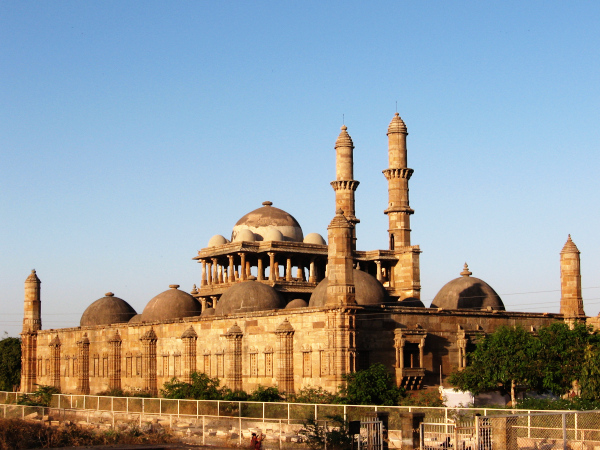VADODARA: An inscription found from the ruins of Champaner-Pavagadh, Gujarat’s first Unesco-declared World Heritage Site, has revealed that all kings who ruled Pavagadh were descendants of Prithviraj Chauhan, the 12th century legendary ruler of Ajmer and Delhi, known both for his valour and passionate love.
The Archaeological Survey of India (ASI) discovered the inscription dated samvat 1525 (1469 AD) near the ruins of ‘Saat Kaman’ or the seven arches, a prominent monument situated on the verge of the hill. The discovery from the inscription from ‘Saat Kaman’ establishes the complete genealogy of the Pavagadh kings and their family history that can be traced to the blood line of Prithviraj Chauhan.
The inscription also establishes the link of the Pavagadh kings with Ranthambore, Rajasthan and has led archaeologists to believe that the monument itself was a ‘durg’ (a fort).
“The inscription gives genealogy of the Pavagadh Chauhans from Hammir Dev Chauhan, the king of Ranthambore and descendant of Prithviraj Chauhan,” said archaeologist and former director of Gujarat archaeology and museum department Dr Y S Rawat.
Chauhan was defeated by Muhammad Ghori in the battle of Tarain. After this, his successors moved to Ranthambore in present day Rajasthan where they ruled for more than 100 years. Haamir Dev, the last Chauhan ruler of Ranthambore, was defeated by the army of Allauddin Khilji in the battle of Ranthambore in 1301 in which the Rajput king also got killed.
“Haamir Dev’s successors had moved to Pavagadh. The inscription provides the list of all the 13 rulers of Pavagadh starting from Ramadev to Jayasimha Dev, the last Chauhan king of Pavagadh,” Rawat said.
“The genealogy in the inscription starts with the mention of ‘Prithviraj Chauhan as the main ruler of the dynasty that had many kings that took birth’. It describes Haamir Dev as ‘Kul Raja’,” he said.
The inscription mentions names of 13 kings of the same dynasty who ruled Pavakdurg (another name of Pavagadh) between 1301 AD to 1484 AD.
Interestingly, the inscription mentions how Jayasimha constructed a ‘durg dwar’ (fort gate) and provided mechanised armoury in the unconquerable ‘durg’ to destroy all his enemies and to protect his pupils in 1469 AD. “Jayasimha was defeated by the Sultans of Gujarat, who ruled Ahmedabad, in the 1484 AD battle. This inscription reveals that 15 years before this final battle, Jayasimha Dev had anticipated a war for which he had begun preparations,” said Rawat.
Source: ToI
Image Courtesy: Wikimedia
You may also like
-
India Can’t Afford to Remain Stagnant at this Juncture, Says PM Modi; Asks People to Buy Locally-Made Goods
-
Stolen Artefacts to be Returned to India from Scotland Museums
-
Netaji’s Hologram Statue at India Gate
-
10th Century Stone Idol of Goat Head Yogini IllegallyRemoved from A Temple in Lokhari, Banda, UP Being Returned to India
-
UNESCO Inscribes ‘Durga Puja in Kolkata’ on the Representative List of Intangible Cultural Heritage of Humanity
